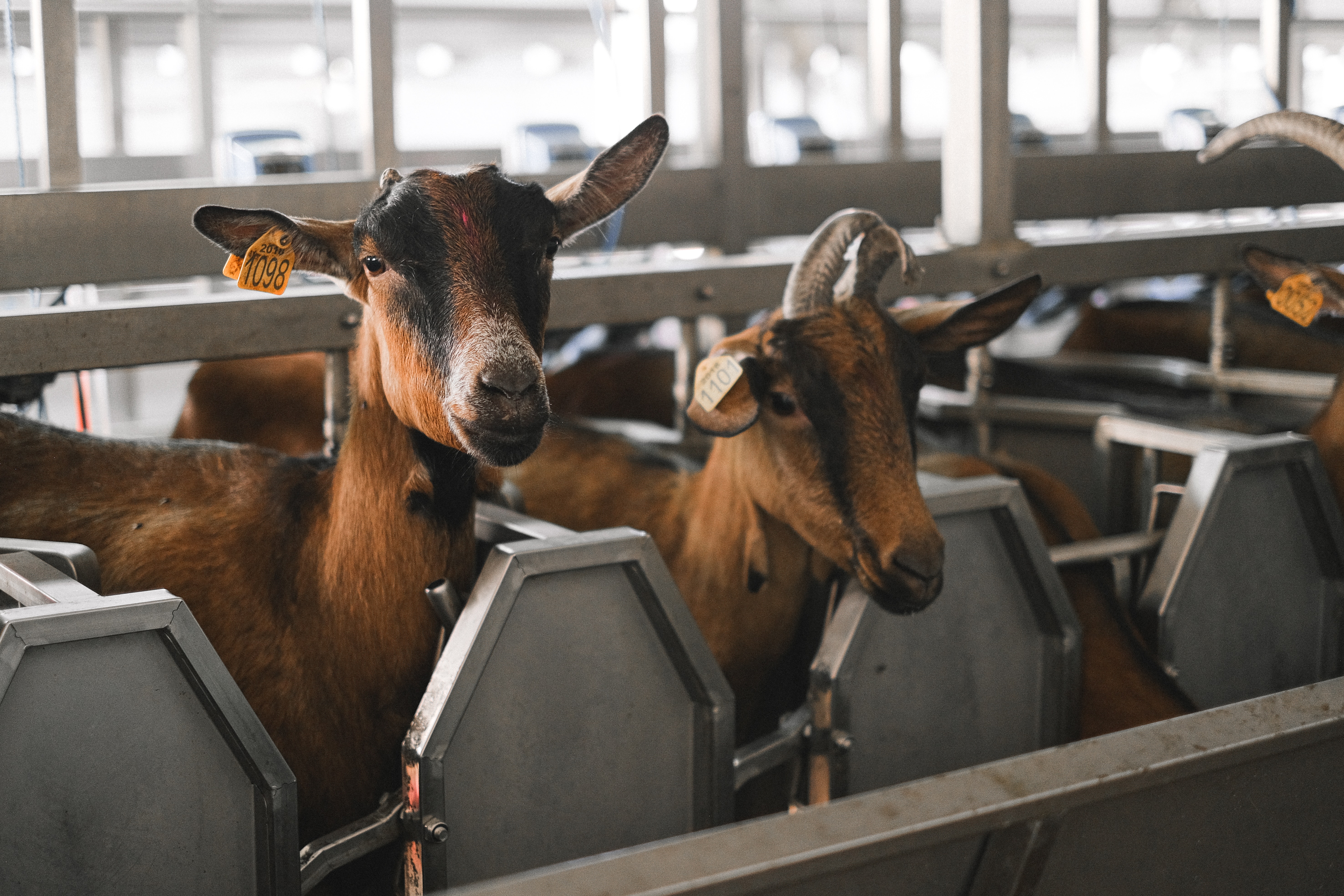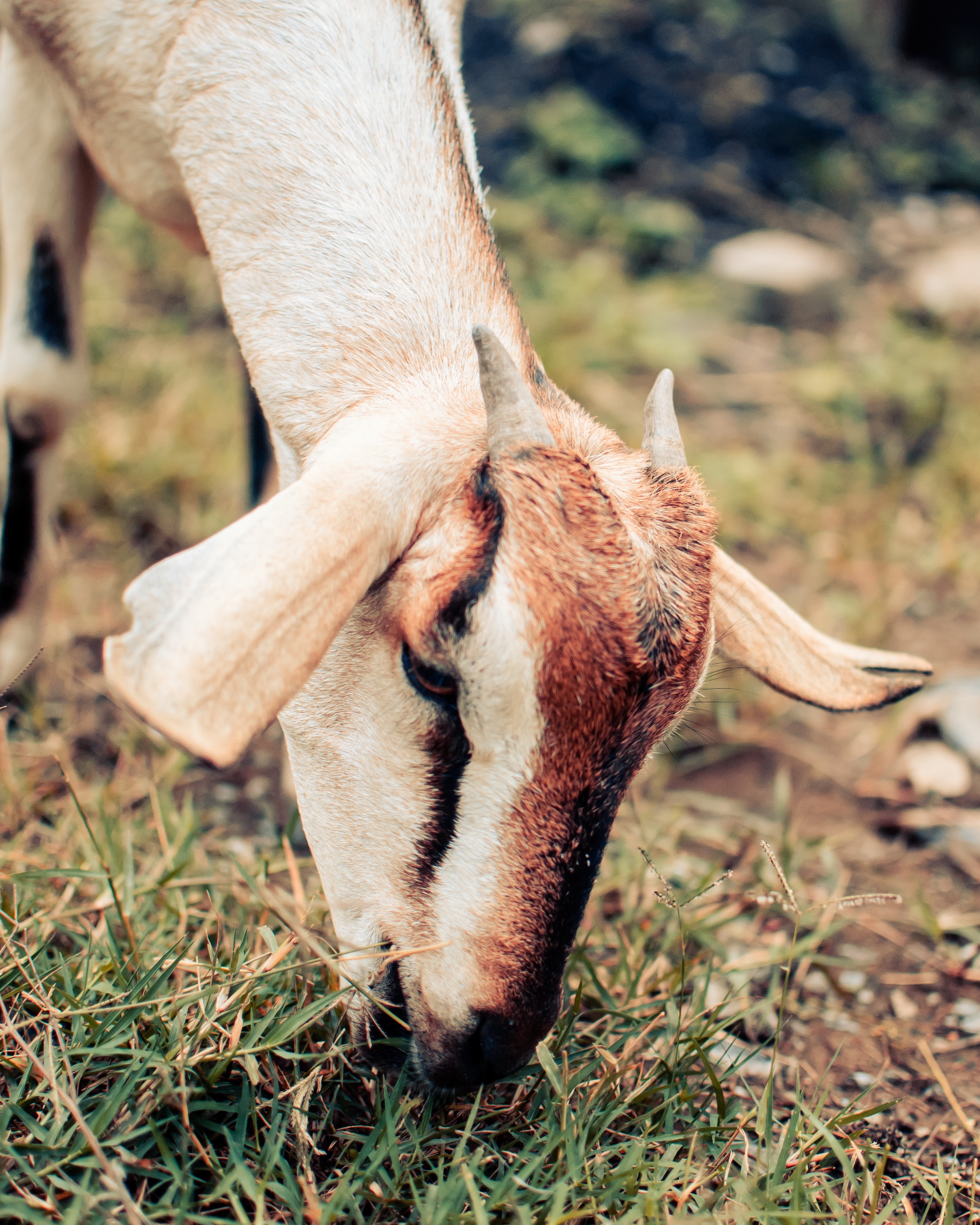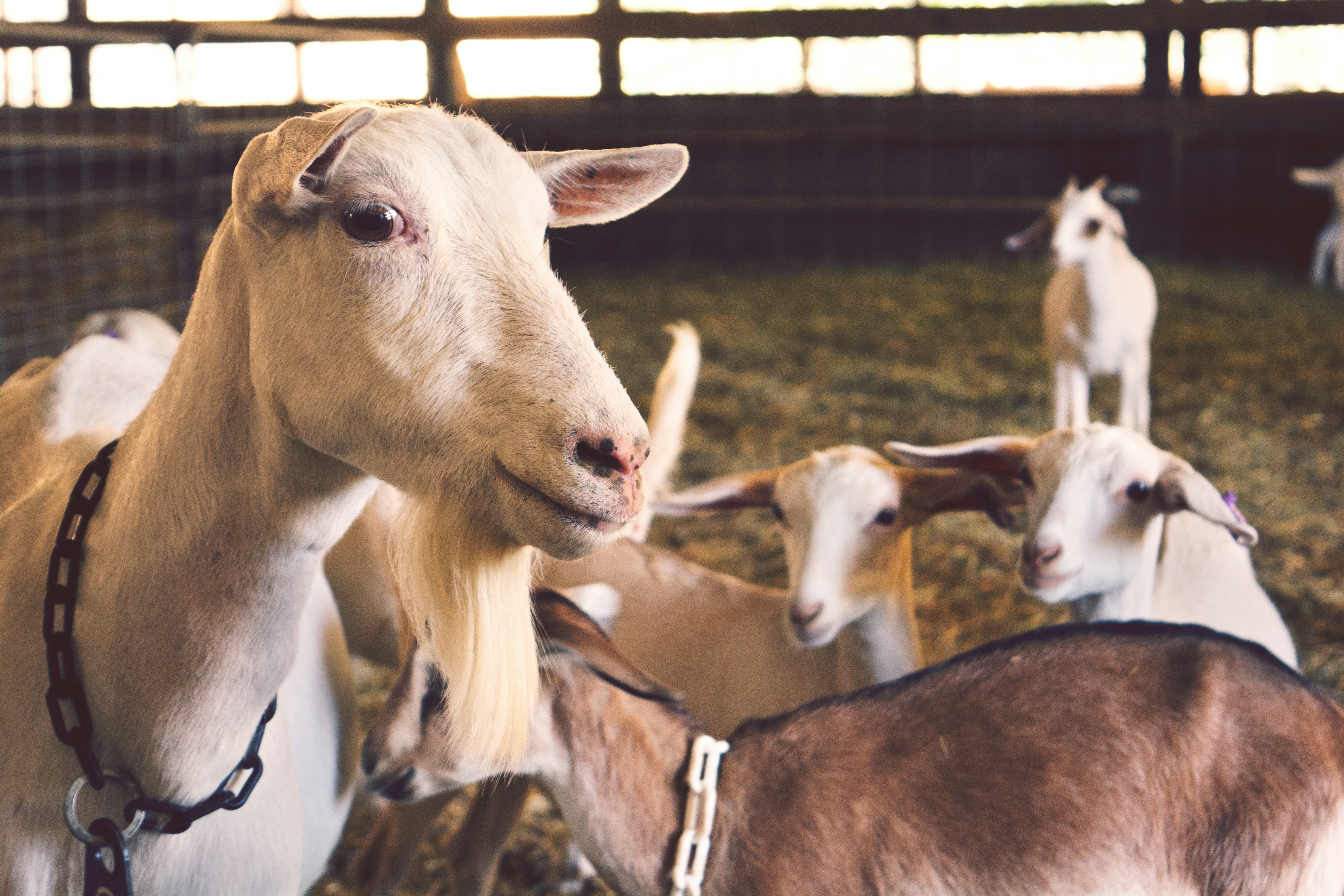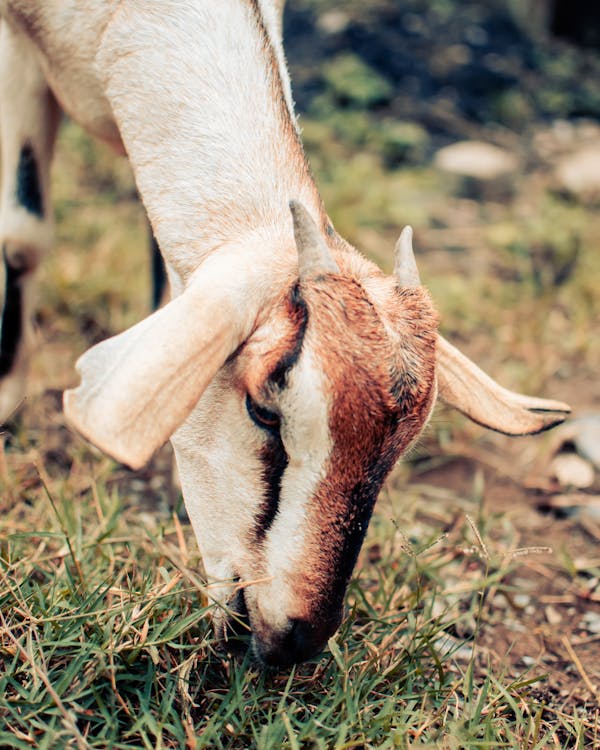
The role of goats in sustainable agriculture and land management
The role of goats in sustainable agriculture and land management
Introdution:
Goats have been domesticated for thousands of years and have been an important source of food, fiber, and labor for many cultures around the world. However, goats can also play a vital role in sustainable agriculture and land management. They are adaptable to a wide range of environments and can thrive in areas where other livestock may not be able to survive.
Goats can be used for weed and brush control, which reduces the need for chemical herbicides and can help prevent wildfires. They can also graze on marginal land, which can improve the productivity of the land and prevent soil erosion. Additionally, goats produce valuable fertilizer in the form of manure, which can be used to enrich soil and improve plant growth.
In this context, goats are considered as a sustainable and environmentally friendly livestock option for small-scale farmers, providing meat and milk while helping to maintain healthy ecosystems. This essay will discuss the various ways in which goats can contribute to sustainable agriculture and land management, and highlight their importance in promoting sustainable and regenerative farming practices.

Material and methods
As an AI language model, I am not able to conduct research or experiments, so I cannot provide specific material and methods related to a particular study. However, I can provide some general information on the types of materials and methods that may be used in research related to the role of goats in sustainable agriculture and land management.
Materials:
-
Goats: Different breeds of goats can have different grazing patterns and preferences, which may influence their effectiveness in weed and brush control or their ability to graze on marginal land.
-
Land: The type of land and vegetation can influence the effectiveness of goats in controlling weeds and brush or grazing on marginal land. Researchers may use different types of land, such as grasslands, shrublands, or forests, to test the effectiveness of goats in different environments.
-
Instruments: Researchers may use various instruments to measure the impact of goats on the land, such as soil quality testers, vegetation meters, and drone mapping technology.
Methods:
-
Grazing trials: Researchers can set up grazing trials to evaluate the effectiveness of goats in controlling weeds and brush or grazing on marginal land. These trials may involve comparing the grazing patterns of goats to those of other livestock or measuring the impact of grazing on vegetation and soil quality.
-
Surveys and interviews: Researchers can conduct surveys and interviews with farmers and land managers to gather information on the use of goats in sustainable agriculture and land management. This can help identify the benefits and challenges of using goats and inform the development of best practices.
-
Literature review: Researchers can conduct a literature review of existing studies and research related to the role of goats in sustainable agriculture and land management. This can help identify knowledge gaps and areas for further research.
Overall, research related to the role of goats in sustainable agriculture and land management may involve a variety of materials and methods, depending on the specific research question being addressed.
Human and goat population trends and production
Human and goat population trends and production can have significant implications for sustainable agriculture and land management. Here are some more details on these factors:
Human population trends: As the global population continues to grow, so does the demand for food and resources. This puts pressure on agricultural land, leading to deforestation, soil erosion, and other environmental problems. The United Nations projects that the global population will reach 9.7 billion by 2050, which will require a significant increase in food production. This presents an opportunity for sustainable agriculture practices, including the use of goats, to meet the growing demand while minimizing environmental impact.
Goat population trends: Goats are the most widely distributed and versatile domesticated animals, found in almost every country in the world. The global goat population was estimated to be around 1 billion in 2020, with the highest numbers in Asia and Africa. The demand for goat products, including meat, milk, and fiber, is increasing, driven by factors such as population growth, urbanization, and changing dietary habits. This presents opportunities for small-scale farmers to increase their income and improve their livelihoods through goat production.
Goat production: Goats are considered a low-input, high-output livestock species, as they are able to thrive on marginal land and require minimal inputs such as feed and water. Goat milk and meat are considered healthier alternatives to cow's milk and beef, and goat fiber is used to produce high-quality textiles. Goat manure is also a valuable source of organic fertilizer for crops. However, there are challenges associated with goat production, including disease management, access to markets, and limited breeding programs.
In summary, human and goat population trends and production have significant implications for sustainable agriculture and land management. As the global population continues to grow, there is a need for sustainable agricultural practices, including the use of goats, to meet the growing demand for food while minimizing environmental impact. The increasing demand for goat products presents opportunities for small-scale farmers to improve their livelihoods, but challenges remain in terms of disease management and access to markets.
Modern and well established scientific principles, practices and skills should be used to obtain maximum economic benefits from goat rearing. Some of the recommended practices are given here under :
1. Housing and shelter:
Housing and shelter are critical components of goat management that ensure the health, comfort, and productivity of the animals.
Here are some more details on housing and shelter for goats:

- Location: The location of the goat house or shelter should be selected carefully. The site should be dry, well-drained, and free from standing water. It should also be protected from strong winds and extreme weather conditions, such as heavy rainfall and intense sunlight. A location near a reliable source of water is also desirable.
- Size: The size of the goat house or shelter depends on the number of animals being housed. As a general rule, each goat should be provided with a minimum of 10 to 15 square feet of floor space. The height of the shelter should also be sufficient to allow the goats to stand up on their hind legs.
- Ventilation: Good ventilation is essential to prevent respiratory problems and to maintain a comfortable environment for the goats. The shelter should have windows, vents, or other openings to allow fresh air to circulate.
- Flooring: The flooring of the goat shelter should be easy to clean and provide good drainage. Concrete or wooden floors are commonly used, although some farmers may prefer dirt or gravel floors.
- Bedding: The shelter should be provided with clean, dry bedding, such as straw or wood shavings, to provide a comfortable resting place for the goats.
- Feeding and watering: The shelter should be equipped with feeding and watering facilities that are easily accessible for the goats. Water should be available at all times, and feed should be provided in a clean, dry feeder.
- Fencing: A secure fence is essential to prevent the goats from escaping and to protect them from predators. The fence should be at least 4 to 5 feet high and made of sturdy materials, such as wood or wire mesh.
2. Proper nutrition:
Proper nutrition refers to consuming a balanced and adequate amount of nutrients that the body needs to function optimally. It involves selecting a variety of nutrient-rich foods from all food groups, including fruits, vegetables, whole grains, lean protein sources, and healthy fats.
Here are some more details on what proper nutrition entails:
- Macronutrients: Macronutrients are the essential nutrients that the body needs in large amounts. They include carbohydrates, proteins, and fats. A balanced diet should consist of approximately 45-65% carbohydrates, 10-35% protein, and 20-35% fats.
- Fiber: Fiber is a type of carbohydrate that is not broken down by the body. It plays an important role in regulating digestion and maintaining a healthy weight. A balanced diet should include 25-30 grams of fiber per day.
:max_bytes(150000):strip_icc():format(webp)/feed-and-tend-goats-3016793_updated-07b21e0c367b4bb685269929d86fc3ff.png)
- Hydration: Proper nutrition also involves staying hydrated by drinking enough fluids. Water is the best option, but other beverages like tea, coffee, and milk can also contribute to hydration.
- Protein control: Proper nutrition also involves consuming appropriate portions of food. Overeating can lead to weight gain and other health problems, while undereating can result in nutrient deficiencies.

3. Disease prevention and control
Disease prevention and control refer to a set of measures taken to minimize the spread and impact of infectious diseases. These measures can include a variety of activities and strategies aimed at reducing the risk of exposure to pathogens and limiting their transmission among individuals and communities.
There are several types of disease prevention and control, including:
- Primary prevention: This involves measures aimed at preventing the initial development of a disease. Examples of primary prevention include vaccination programs, public health education campaigns, and environmental interventions to reduce exposure to risk factors such as pollutants or infectious agents.
- Secondary prevention: This involves early detection and treatment of a disease to prevent it from progressing or causing complications. Examples of secondary prevention include routine health screenings, such as mammograms or colonoscopies, and treatment of pre-disease conditions such as pre-diabetes or hypertension.
- Tertiary prevention: This involves measures aimed at reducing the impact of a disease or preventing its recurrence in individuals who have already been affected by it. Examples of tertiary prevention include rehabilitation programs for stroke survivors or support groups for individuals with chronic conditions such as diabetes.

Disease prevention and control also involve several key principles, including:
- Surveillance: This involves monitoring the occurrence and distribution of diseases within a population to identify trends, outbreaks, and potential risk factors.
- Isolation and quarantine: These are measures taken to prevent the spread of infectious diseases by separating individuals who are infected or suspected of being infected from healthy individuals.
- Contact tracing: This involves identifying and monitoring individuals who may have been exposed to an infectious disease to prevent further transmission.
- Personal protective measures: These are measures taken by individuals to reduce their risk of infection, such as wearing masks, washing hands regularly, and practicing social distancing.
4. Breeding and reproduction:
Breeding and reproduction are key aspects of livestock production, and refer to the management practices used to achieve desired genetic traits in livestock populations, and to support reproductive health and productivity.
Breeding involves selecting and mating animals based on their desired traits, such as growth rate, milk production, or disease resistance. The objective of breeding is to improve the genetic traits of the herd or flock over time, by selecting animals with the desired traits and breeding them to produce offspring with similar traits.
Reproduction management involves managing the reproductive health and productivity of livestock, to ensure successful breeding and reproductive outcomes.
This can involve a range of practices, including:
- Monitoring reproductive health: This involves monitoring animals for signs of reproductive problems, such as infertility, infections, or pregnancy-related complications. Regular veterinary care and monitoring can help to identify and address these issues early, improving reproductive outcomes.
- Managing breeding cycles: This involves managing the timing of breeding, to ensure that animals are mated at the optimal time for successful fertilization and pregnancy. This may involve artificial insemination, hormone therapy, or other assisted reproductive technologies.
- Supporting maternal health: Maternal health is critical to successful reproduction, and involves managing factors such as nutrition, stress, and disease prevention during pregnancy and lactation.
- Managing offspring health: Offspring health is also critical to maintaining productive and healthy livestock populations. This involves managing factors such as nutrition, vaccinations, and disease prevention, to ensure that offspring grow and develop into healthy, productive adults.
Effective breeding and reproduction management require a deep understanding of animal genetics, reproductive physiology, and animal behavior. By adopting best practices for breeding and reproduction management, livestock producers can improve the productivity, health, and genetic quality of their herds and flocks, supporting long-term success and sustainability.
5. Grazing and pasture management:
Grazing and pasture management refer to the strategies and practices used to sustainably manage grasslands and other areas of land used for livestock grazing. Effective grazing and pasture management are critical to ensuring the productivity and sustainability of livestock operations, as well as promoting the health and biodiversity of grazing lands.
Grazing management involves making informed decisions about the number of animals to graze in a given area, the duration of grazing periods, and the timing and frequency of grazing.
Some key considerations in grazing management include:

- Stocking rate: This refers to the number of animals that can be sustained on a given area of land without causing damage to the vegetation or soil. Stocking rates are determined by factors such as the type and quality of vegetation, soil fertility, and climate conditions.
- Grazing intensity: This refers to the amount of vegetation consumed by animals during grazing. Overgrazing can lead to the depletion of grasses and other plants, reducing the productivity and biodiversity of the grazing area.
- Grazing duration: This refers to the length of time that animals are allowed to graze in a particular area. Grazing durations should be long enough to allow animals to obtain adequate nutrition but short enough to prevent damage to the vegetation and soil.
Pasture management involves maintaining and improving the health and productivity of grasslands and other grazing areas.
This can involve a range of practices, including:
- Fertilization: Application of fertilizers can help to improve soil fertility and increase the productivity of grazing lands.
- Irrigation: In areas with low rainfall, irrigation can help to maintain vegetation productivity and support livestock grazing.
- Rotational grazing: This involves dividing grazing areas into smaller paddocks and rotating animals between them to prevent overgrazing and promote the growth of new vegetation.
- Weed control: The control of invasive weeds and other undesirable plants can help to maintain the productivity and biodiversity of grazing lands.

Effective grazing and pasture management require an understanding of the ecological processes that underlie the functioning of grazing lands, as well as the principles of livestock management and animal nutrition. By adopting sustainable grazing and pasture management practices, livestock producers can improve the productivity and profitability of their operations while supporting the long-term health and productivity of grazing lands.
6. Record keeping
Record keeping is the practice of documenting and organizing information related to a business or organization's activities, transactions, and operations. Effective record keeping is essential for maintaining accountability, supporting decision-making, and complying with legal and regulatory requirements.
Record keeping involves collecting, organizing, and storing various types of information, including financial transactions, personnel records, production data, and customer information.
Some of the key benefits of effective record keeping include:
- Legal compliance: Many businesses are required by law to maintain certain records, such as tax records, employee payroll records, and environmental permits. Effective record keeping helps ensure that businesses can meet these legal obligations and avoid penalties for non-compliance.
- Accountability: Record keeping helps to establish a clear record of an organization's activities, decisions, and transactions. This can help to support accountability and transparency, and facilitate auditing and reporting.
- Decision-making: Record keeping provides a historical record of an organization's activities and performance, which can be used to inform decision-making and strategic planning.
- Risk management: Effective record keeping can help businesses to identify and manage risks, such as financial fraud, data breaches, or operational failures.
Effective record keeping involves several key practices, including:
- Creating a record keeping policy: A clear policy outlining the types of records to be maintained, how long they should be kept, and who is responsible for record keeping can help ensure consistency and clarity.
- Organizing records: Records should be organized in a logical and systematic manner, with clear and consistent naming conventions and file structures.
- Maintaining accuracy and completeness: Records should be accurate, complete, and up-to-date, with sufficient detail to support future analysis and decision-making.
- Ensuring security and confidentiality: Records containing sensitive or confidential information should be protected against unauthorized access or disclosure, through physical security measures and information security protocols.
- Retaining records: Records should be retained for the appropriate length of time, based on legal and regulatory requirements, business needs, and historical significance.
Overall, effective record keeping is an essential practice for any organization seeking to maintain accountability, support decision-making, and comply with legal and regulatory requirements. By implementing clear policies and procedures, and maintaining accurate, organized, and secure records, businesses can better manage risks, improve efficiency, and support their long-term success.
7. Caring for kids
also known as goat kids, is an essential part of goat farming, whether for dairy or meat production. Proper care of kids can help ensure their health and productivity, as well as the success of the overall goat herd. Here are some key aspects of caring for goat kids:
- Colostrum feeding: Goat kids are born with little to no immunity to diseases, making colostrum feeding vital. Colostrum is the first milk produced by the mother goat, which is rich in antibodies and nutrients essential for the kid's growth and development. It is recommended that kids receive at least 10% of their body weight in colostrum within the first 24 hours of life.
- Housing and bedding: Goat kids need a clean, dry, and comfortable environment to thrive. A separate pen or area should be designated for the kids, with proper ventilation and protection from the elements. Bedding material such as straw or wood shavings should be used to provide a soft, dry surface for the kids to rest on.
- Nutrition: A balanced and nutritious diet is crucial for the growth and development of goat kids. After the first few days of colostrum feeding, kids should be gradually introduced to solid feed, such as hay or a grain mix specifically designed for kids. Fresh water should also be available at all times.
- Health management: Regular monitoring of goat kids' health is important to identify and treat any potential health issues early. Kids should be checked daily for signs of illness or injury, and any concerns should be promptly addressed by a veterinarian. Regular vaccinations and deworming should also be conducted according to a recommended schedule.
- Socialization: Socialization with other goats is important for the mental and behavioral development of goat kids. Kids should be introduced to other goats at a young age and allowed to interact with them under supervision.

Effective care of goat kids requires attention to detail, patience, and a commitment to their health and wellbeing. By adopting best practices for colostrum feeding, housing and bedding, nutrition, health management, and socialization, goat farmers can help ensure the success of their goat herds and the productivity of their operations.
Blog Upload on - March 24, 2023
Views - 3120

posted By -
Animals Super Store
Related Posts
-
 DELHI BIRD & ANIMAL HELPLINE
DELHI BIRD & ANIMAL HELPLINE
Aug. 27, 2022 -
Eastern Tiger Snake
May 11, 2023 -
Maharashtra Bird Helpline
Aug. 30, 2022 -
 Types of All Goats Breed Name A to Z
Types of All Goats Breed Name A to Z
Jan. 17, 2023 -
 Top 10 Largest Snake In The World
Top 10 Largest Snake In The World
March 2, 2023 -
 Benifits Of Pet Adoption
Benifits Of Pet Adoption
May 15, 2023 -
The role of animals in human culture and religions
March 22, 2023 -
Dog Diseases
April 4, 2022


